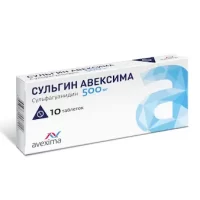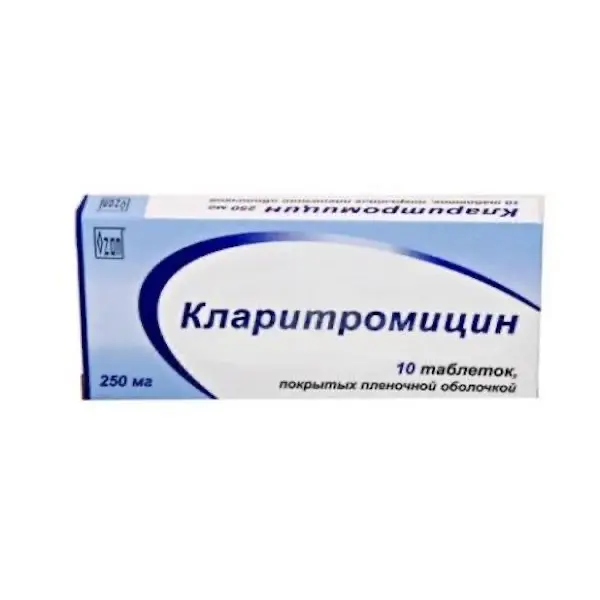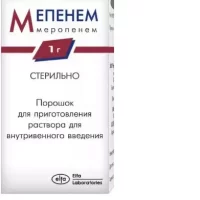Description
Dapson Pharmacodynamics
Anti leprosy agent of the group of sulfones. It has a bacteriostatic effect.
It is active against a wide range of microorganisms, especially effective against Mycobacterium leprae (the minimum effective concentration is within nanograms, so therapeutic effect in leprosy is achieved at a dose of 25 mg per day), Plasmodium, Pneumocystis jirovecii.
The mechanism of action presumably has at least 2 points of application: on the one hand, an analogue of dihydropteric acid is formed (dapsone is absorbed instead of p-aminobenzoic acid), and on the other hand, inhibition of dihydropteroate synthetase enzyme occurs. As a result of these processes there may be disturbances in other systems such as dihydrofolate reductase whose function is to convert dihydrofolic acid which is not used by microorganisms into tetrahydrofolic acid.
Presumably, in addition to the antibacterial effect, the effect of dapsone is determined by other factors. In particular, dapsone can inhibit the production of cytotoxic radicals in the chain myeloperoxidase – hydrogen peroxide – halogen-containing compounds.
Other effects of dapsone have also been described: inhibition of the Artus reaction, of the complement system when activated by its alternative pathway, inhibition of some lysosomal enzyme systems, erythrocyte response to phytohemagglutinin and finally, inhibition of leukotriene B4 binding to its specific receptors.
The effect on the immune system is obviously also an important property of dapsone, along with its analgesic and anti-inflammatory effects identified in the experiment.
Indications
– Leprae – in combination with other drugs effective against leprosy.
– Duhring’s dermatitis herpetiformis, bullous pemphigoid (in combination with glucocorticosteroids and immunosuppressants or monotherapy in a mild course).
– In some cases – treatment of vasculitis (in complex therapy).
Contraindications
– Hypersensitivity to dapsone or other components of the drug, to sulfonamides and sulfones.
– Severe anemia (hemoglobin less than 70 g / l).
– Porphyria.
– Deficiency of glucose-6-phosphate dehydrogenase.
– Severe liver disease.
– Childhood under 18 years old.
Pregnancy and lactation:
If dapsone should be used in pregnancy, the anticipated benefit to the mother and the possible risk to the fetus should be weighed. In the first 4 months of pregnancy and during lactation the drug should be prescribed only in case of extreme necessity with observance of special caution.
As dapsone is secreted into breast milk, women taking the drug should give up breast feeding.
Dosage and administration
- Oral .
- It is best taken after a meal with plenty of water. It is used, as a rule, in the complex therapy. One day a week the drug is not taken (e.g. on Sundays).
- Dosage and duration of use
The dosing regimen is individual. The average dose of the drug is 50-100 mg of dapsone, i.e. 1-2 tablets a day, 6 days a week. - Unless otherwise prescribed, the following dosage guidelines apply:
Lepra: The average daily dose is 50-100 mg (1 to 2 tablets) per day. Administration of the drug is prolonged over a number of years. - Duhring’s dermatitis herpetiformis: treatment should be started with 2 tablets daily (100 mg dapsone) for 1 week. The dose can then be increased to 4 tablets (200 mg dapsone) until an effect is achieved. However, in each case, the lowest dose of 50 mg should be sought. In individual cases, 300 mg of dapsone (6 tablets) per day can be taken for a short period of time, although a maintenance dose of 50 mg of dapsone per day should be sought, which can be achieved by combining the drug with glucocorticosteroids.
- If the clinical picture of the disease is accompanied by gastrointestinal symptoms, the prescription of an aglutin diet may help to reduce the drug dose.
- The duration of treatment in Duhring’s dermatitis herpetiformis is long, over many years. The duration of the break between courses increases with the use of glucocorticosteroids. The possibility and duration of breaks are determined on a case-by-case basis.
- Bullous pemphigoid – 100-150 mg/day.
- Vasculitis – 50-150 mg/day.





